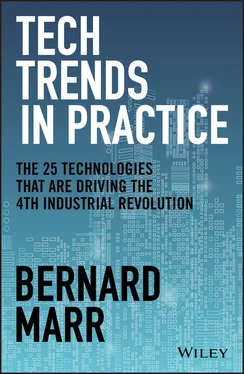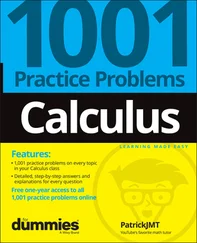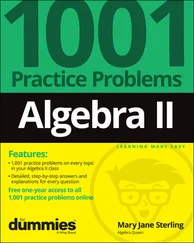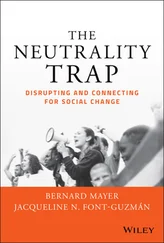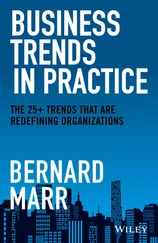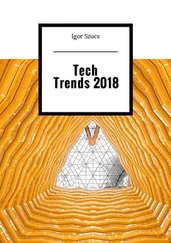TREND 1 Artificial Intelligence and Machine Learning
The One-Sentence Definition
Artificial intelligence (AI) and machine learning refers to the ability of machines to learn and act intelligently – meaning they can make decisions, carry out tasks, and even predict future outcomes based on what they learn from data.
What Is Artificial Intelligence and Machine Learning?
Speaking in 2016, Stephen Hawking said, “Success in creating AI would be the biggest event in human history.” Now, it’s no secret that technology trends often create a lot of hype. But in the case of AI, the hype is warranted. Like Hawking, I believe AI will transform our world and how we live in it.
AI and machine learning already plays a bigger role in everyday life than you might imagine. Alexa, Siri, Amazon’s product recommendations, Netflix’s and Spotify’s personalized recommendations, every Google search you make, security checks for fraudulent credit card purchases, dating apps, fitness trackers … all are driven by AI.
AI and machine learning is the foundation on which many other technology trends in this book are built. For instance, without AI, we wouldn’t have achieved the amazing advances in the Internet of Things (IoT, Trend 2), virtual reality (Trend 8), chatbots (Trend 11), facial recognition (Trend 12), robotics and automation (Trend 13), or self-driving cars (Trend 14) – to name just a few.
But what exactly is AI and machine learning, and how does it work? In very simple terms, AI involves applying an algorithm (a rule or calculation) to data in order to solve problems, identify patterns, decide what to do next, and maybe even predict future outcomes. Crucial to this process is an ability to learn from data and get better at interpreting data over time. And this is where the machine learning part comes in. Machine learning is a subdiscipline of AI, and it involves creating machines that can learn. (“Machines,” by the way, may include computers, smart phones, software, industrial equipment, robots, vehicles, etc.)
The human brain learns from data, not a preprogrammed set of rules. We humans are continually interpreting and learning from the world around us. We generally get better at this process over time, learning from our successes and failures. And we make decisions or take action based on what we’ve learned. AI – or, more specifically, machine learning – replicates this process, but in machines. So, rather than just giving a machine a set of rules to follow, machines can now “learn” from data. Deep learning is another AI-related term that you might have heard. If machine learning is a subset of AI, deep learning is a subset of machine learning – it’s essentially a more cutting-edge form of machine learning, involving more complex layers of data processing. (For the purposes of this chapter, both machine learning and deep learning will be wrapped up in the umbrella term AI.)
Like humans, the more data a machine has to learn from, the smarter it becomes. That explains why AI has made such dramatic advances in the last few years – advances that we might not have thought possible 10 or even five years ago. Modern AI needs data to function. And we’re now creating more data than ever before (see Big Data, Trend 4). This continual expansion in data, along with advances in computing power, is fueling a rapid acceleration of AI capabilities.
AI isn’t just infiltrating our everyday lives; it’s going to transform our industries and businesses. According to one survey, 73% of senior executives see AI, machine learning, and automation as important areas to maintain or increase investment in. 1(Governments, too, are prioritizing AI investment. In 2019, the White House launched a National AI Initiative directing government agencies to commit to advancing AI. 2)
As well as transforming entire businesses and industries, AI is also going to transform many human jobs. IBM predicts that more than 120 million workers globally will need to be retrained in the next three years due to AI. 3AI-enabled automation (see Trend 22) will have a particularly significant impact and may lead to the displacement of many jobs. But rather than subscribe to a vision of a dystopian future where all human jobs are given over to robots, I believe AI will make our working lives better. Yes, jobs will be impacted by automation and AI, and many current human jobs will no longer exist in 10 or 20 years’ time. But AI will enhance the work of humans, and new jobs will arise to replace displaced jobs. (Just think how computing and the internet led to the demise of some jobs but created many more new roles.) What’s more, as machines become more intelligent and capable of carrying out more human tasks, I believe that our uniquely human capabilities – things like creativity, empathy, and critical thinking – will become all the more precious and valuable in the workplaces of the future.
How Is Artificial Intelligence and Machine Learning Used in Practice?
AI gives machines the ability to carry out a wide range of humanlike processes, such as seeing (think facial recognition), writing (think chatbots), and speaking (think Alexa). And as machines’ ability to act intelligently gets better and better, AI will infiltrate even more of our lives.
Because AI underpins so many other technology trends, throughout this book you’ll find lots of specific examples of how AI is used across different businesses and industries. Here, I want to briefly whet your appetite and set out just a few of the amazing things AI can already do.
Thanks to AI, Machines Can Beat Humans at Games
Machines battling man is the theme of many a sci-fi movie. In real life, AI research and development has seen intelligent machines beat their human opponents in some significant (but thankfully less harmful) ways.
In 1997, IBM’s Deep Blue chess-playing machine beat world champion Garry Kasparov. 4Many hailed this as the start of machine intelligence catching up to human intelligence, but the reality is perhaps a little less compelling. Deep Blue used brute force computing power to consider every possible chess move, and that’s how it beat Kasparov. (Discover how machines learned to get a lot more creative at game-playing in Chapter 17.)
In 2011, IBM’s Watson AI system beat two human contestants at the game show Jeopardy!. 5And not just any contestants – two of the most successful contestants the show had ever seen, who had won $5 million between them.
In 2018, DeepMind’s AlphaStar AI beat one of the world’s most successful professional players of the real-time strategy game StarCraft II, in an impressive 5–0 victory. 6
In 2019, Microsoft revealed its Suphx AI can now beat top players at the complex Chinese tile game Mahjong. After 5,000 games, the AI was able to compete at 10th dan ranking (basically, super-expert level) – a feat that only 180 humans have ever been able to manage. 7
Also in 2019, we learned that AI can now solve a Rubik’s Cube in 1.2 seconds – that’s two seconds faster than the current world record holder (and about 20 years faster than the average human). 8The DeepCubeA system was created by researchers at the University of California, Irvine.
AI Is Driving Advances in Healthcare
In August 2019 the UK government announced it would dedicate £250 million to funding AI in the National Health Service. 9Here are just a few examples of how AI is beginning to transform healthcare.
A study published in The Lancet in 2019 found that AI is as good as human experts when it comes to diagnosing disease from medical images. 10Deep learning is showing enormous promise in diagnosing a range of diseases, including cancer and eye conditions.
Читать дальше
